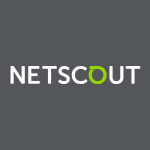What is our primary use case?
We use it to look into performances in our system and different dedicated environments. We try to draw graphs that represent what we have in terms of time response, bandwidth, and input and output across all our data centers to see if the load balance is correct. We have some traffic flows that say if the traffic is dropping and being taken by another data center. There are a lot of reports all around about different points of our architecture.
It is deployed as a physical appliance on-premises. So, we have the SevOne appliance in our data center.
How has it helped my organization?
Based on some metrics, we have policies that will raise issues and tickets internally, in case thresholds are being crossed.
We have benefited mainly from the use of the dashboard interface. It makes the network visually interesting for people who are not in the network. A lot of people are not network techies who understand streams in the network. Based on location, we have streams coming in and out. They can see visually when there is some problem. They don't need to understand all the network technology behind it to be able to understand if everything is working well or if there is a problem.
The visualization doesn't remain in the network. It is available for everyone in production management, etc.
What is most valuable?
We don't use all the features so far because we are just using the product that was there without supervision for one year. So, with a couple of colleagues, we are doing a lot of work to put everything back on track. We know that SevOne can do a lot, in terms of hitting some baselines, especially with their new visualization software, SevOne Data Insight (DI). This gives a new perspective in terms of dashboarding. It is something more dynamic and flexible than the previous version.
There are different types of reports based on the metrics that we want to monitor and check.
The most valuable feature is that we can draw reports with the historic value of data. So, we can see if there is a trend in the past or if something has been changing over the past couple of weeks. When we have an incident, we need to go back to the occurrence of this incident some time in the future. We can see if it is something that happens regularly or not.
Data coming from our system to SevOne needs to be comprehensive. This is the way SevOne works around data flows. So far, it has been good.
They support software-defined networks as part of another module. They have their main module, which is called NMS, then they have other side software which complements the main architecture. They also support software-defined networks, like Cisco ACI.
What needs improvement?
We made assessments internally about the system, i.e., about what could be done better. There are a lot of points.
With the administrative management of the appliance, if some object appears from SevOne because something changed in the network or whatever, then as an administrator you will not be aware. If you are using this object in a report, this object will disappear from the report and you will not be aware of it. So, if you have 1,000 reports, you cannot always check these reports everyday to see if objects are missing or information has disappeared. We don't have any information on alerts, saying that something is happening there and maybe we need to take action. If an object was replaced by another one, or if a link was replaced by another one, then the graph needs to be changed because it doesn't exist in the graph anymore. However, we don't have this information.
This is also the same in terms of the internal architecture that we put in place inside the system. We can tag our network device based on the firmware, some rules, or a manufacturer/vendor. But, it is not always clear when we add a bunch of devices that they will mark these categories. For example, we need to make sure that one device is from a specific vendor. We have to dig deep in each device to make sure they are really attached to the correct vendor. If they're not attached to the correct vendor, then information will not be pulled in the same way, and we might be losing information. So, small tweaks need to be made to the internal management, making it easier for me.
SDN networking is going from legacy towards object-oriented, so we don't have a choice. It is something that we are using and need. Unfortunately, our IT lead is not really into the SDN solution of ACI, as apparently it is missing some features in terms of deep analytics and monitoring of ACI hardware infrastructure as-is. In the future, we may use SDN infrastructure because I know they are releasing features every month.
For how long have I used the solution?
We have had it in service for five years. I was not there when it was installed at the beginning. I have been handling it for a year and a halfs.
What do I think about the stability of the solution?
It is really stable. We don't have any issues, except when we do our disaster scenario a couple of times a year. We have to physically cut the connection between our sites for redundancy and compliance. Then, we can sometimes see that we need to ask the help of support to put back the database in a correct state because the replication is not always clicking well. But, that is most likely because of the technology used behind it. MySQL is always a bit sensitive in this kind of scenario. So, I am not sure it is really the SevOne application that has an issue. It is more the technology that lies behind it which can be a bit faulty in these kinds of scenarios. Besides the replication, it works really nice.
Without disaster scenarios, we are reaching 100% of availability easily.
What do I think about the scalability of the solution?
We just scaled it up a month ago because we were reaching some limits. It is quite scalable. It took a day to scale it up with the new appliances that were delivered. It is quite easy to scale.
We are monitoring 886 devices. That is infrastructure monitoring. There are more devices that we still want to monitor. Our plan is to reach 1,300.
How are customer service and technical support?
We use the technical support quite often. It is good, though it depends on the location that is doing the support. There are several locations that do support, whether it's India, Poland, or the US. Depending on that, the support can vary as well as the response time, because we're not always in the same time zones as their support. Sometimes, it can take a long time to receive an answer if we have been redirected to the wrong support.
Since it is something new, we are in contact with the vendor. We can give them some updates about what issues we are facing and if we are happy with the product so far.
Which solution did I use previously and why did I switch?
We are using another tool called EMC Smarts, but it is more for event monitoring. So, there isn't any drawing of dashboards. It is more only thresholds for SNMP Traps that can be received. Based on that, it distributes tickets. So, we cannot see the history nor draw the status of a link.
A long time ago, I used Nagios, which is kind of the precursor to monitoring. However, I cannot compare it to SevOne because I used it about 10 years ago.
What other advice do I have?
You have to try it. The first step may be a bit harsh because of the layout. It's an older type of layout, but it works. Once you find your way with it, it is quite easy and straightforward. But, at first, it's not always easy to handle. But, it is a good tool that works nicely. So far, we don't regret it.
We need to master the system to be able to fully grasp what can be done. It is not for every end user who wants to go into the system and start monitoring whatever they want. They need to be able to grasp some content before that. Without training or previous knowledge, it is not always easy to grasp every concept behind the solution. It is a monitoring system so it's not a system where you click, then drag and drop.
I know they support telemetry. But the device on the end user side needs to be able to send telemetry information, which is not something we can do yet. We don't have enough devices doing telemetry to really use that feature to its greatest potential. So, this is something we have on our roadmap, and probably we will dig into it in a couple of months or years when our infrastructure is evolving in that direction.
Telemetry is something that we would like to invest some more time with, because it is different from having just simple SNMP polling, which is heavy on the system. It puts on a lot of overload based on the frequency of polling. By default, it takes five minutes. We want to have something with a frequency smaller than five minutes and maybe pause every 10 seconds, and SNMP can do it, but it puts a lot of overhead on the system. With telemetry, the big advantage of telemetry is a constant stream of information. There is no overhead. We just have a constant flatline of internal usage. We don't have huge peaks. We have fast information, close to real-time. We should have closer to real time monitoring in the future, instead of just being passive and waiting. There is still a ways to go for telemetry, but most infrastructure is capable of doing it.
Nothing is perfect. I would rate it a solid seven (out of 10) because a lot of points could be improved. I have a long list of small tweaks and customization that can be brought to the system. We give some of them to the customer support, but we are not their only clients. So, they go through prioritizing all their processes. Sometimes, our propositions are refused. It is a good system, but there is still some room for big improvements.
Which deployment model are you using for this solution?
On-premises
Disclosure: PeerSpot contacted the reviewer to collect the review and to validate authenticity. The reviewer was referred by the vendor, but the review is not subject to editing or approval by the vendor.















